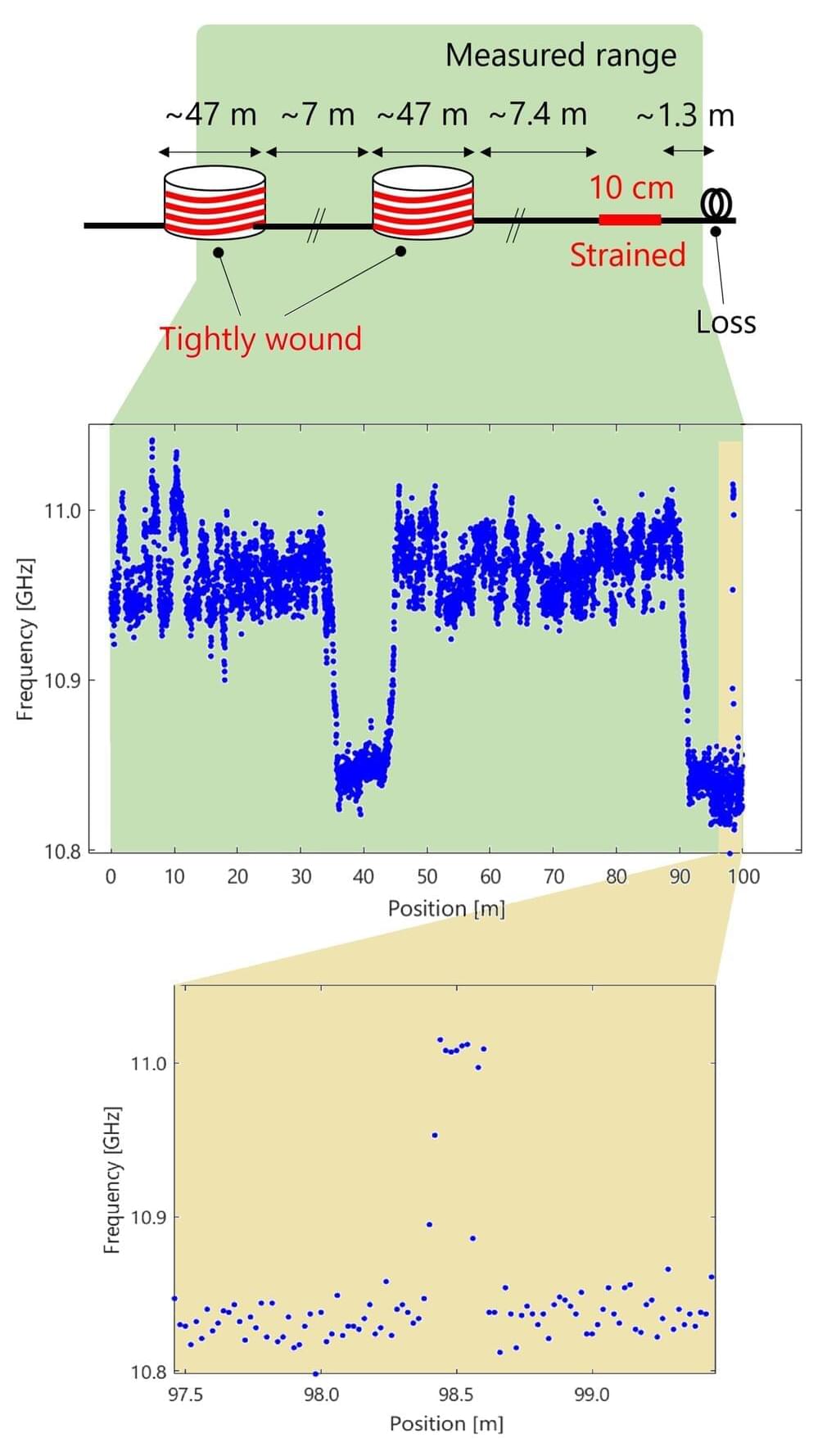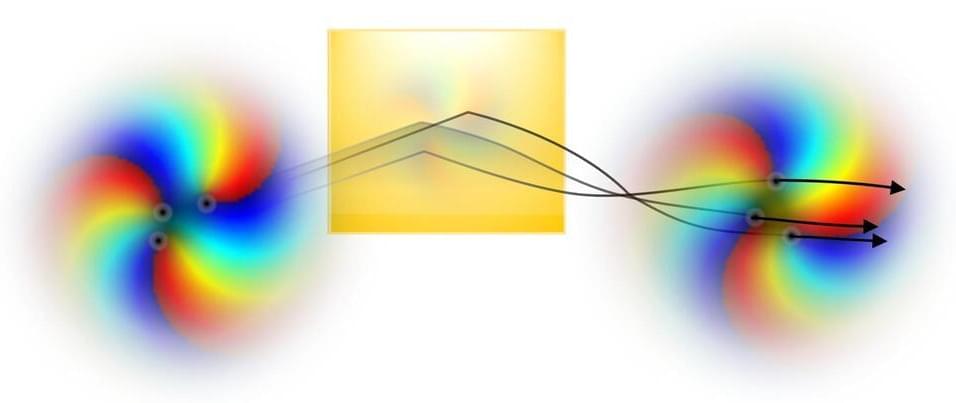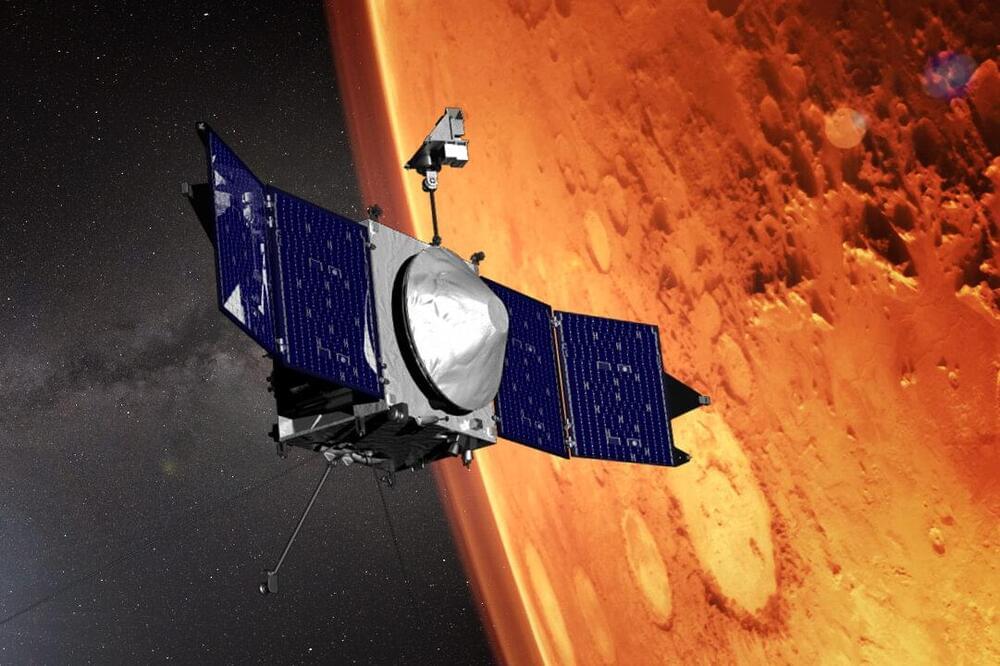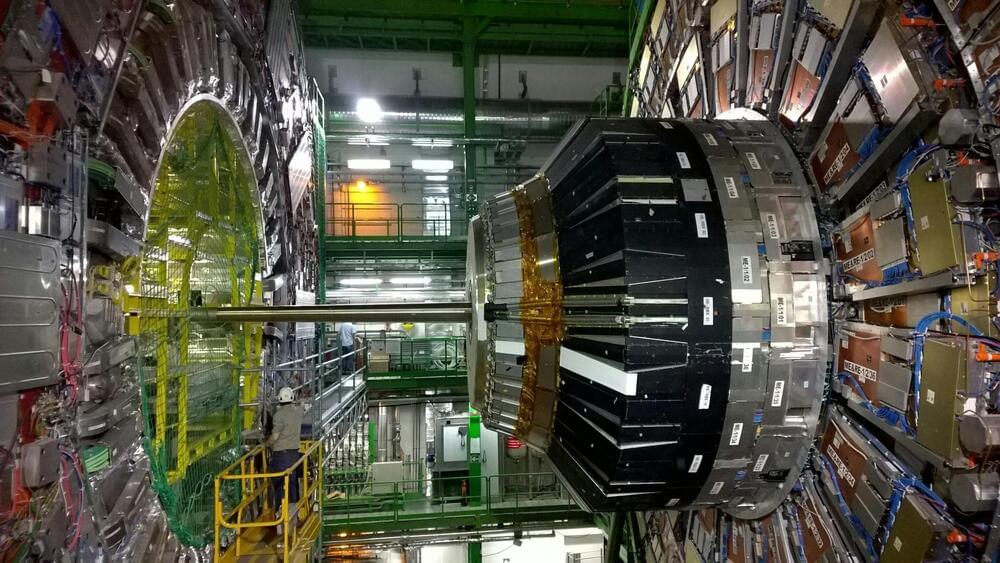Scientists just released the first comprehensive survey of the Cascadia Subduction Zone, the most dangerous earthquake-producing fault in the US.
Category: futurism – Page 104
Their research is published in the Journal of Lightwave Technology.
“We tackled the persistent issue of balancing spatial resolution and measurement range in our original fiber-optic distributed strain sensing technique called BOCDR,” said Associate Professor Yosuke Mizuno of Yokohama National University. “Our purpose was to develop a more efficient system that overcomes this trade-off without relying on complex components like variable delay lines.”
The conventional BOCDR technique offers advantages such as operation with light injection from one end of the sensing fiber, relatively high spatial resolution, and random-access capability to sensing points. However, it also faces trade-offs between spatial resolution and measurement range. Previous efforts to mitigate this issue have included special schemes, such as temporal gating, double modulation, and chirp modulation.
Viruses called phages hold enormous promise as a way to fight infection, but don’t expect to see them in the clinic soon.
Researchers have recently observed a fascinating effect in the behavior of twisted light when it reflects off surfaces.
Everyday experience tells us that light reflected from a perfectly flat mirror will give us the correct image without any deformation. Interestingly, this is not the case when the light field itself is structured in a complex way. Tiny deformations appear.
Dr Shannon Curry said she believes humans will first land on Mars — at the earliest — in 2040, but more realistically 2050. And 2075 before Mars colonization! Very realistic prediction, and I enthusiastically agree.
NASA’s MAVEN spacecraft, led by scientists at the University of Colorado Boulder, was supposed to operate for one year when it entered orbit on September 21, 2014. Ten years later, the Mars Atmosphere and Volatile Evolution orbiter has been a boon to scientists studying the red planet and they hope it will remain in operation for years to come.
In May, MAVEN researchers got to watch as a huge solar storm hit the planet along with a massive dose of radiation. The MAVEN spacecraft is an orbiter, so it won’t ever land on the surface of Mars like the Curiosity and Perseverance rovers. Instead, it’s designed to examine the Martian atmosphere, which principal investigator Shannon Curry said “holds a number of secrets in terms of our past, present, and future.”
Here are some takeaways from Curry’s interview with Colorado Matters.
Google’s UNREAL New AI
Posted in futurism, robotics/AI
The rapid advancement of AI-generated content is challenging our understanding of authenticity and creativity, raising significant ethical, regulatory, and existential questions about the future of human-AI collaboration Questions to inspire discussion AI-Generated Content Revolution 🎙️Q: How is Google’s Notebook LM.
Europe’s physics lab CERN said Sunday that some 500 scientists linked to Russian institutes will be affected when it stops cooperation with Russia in late November as planned.
University of Maryland scientists uncovered evidence of an ancient seafloor that sank deep into Earth during the age of dinosaurs, challenging existing theories about Earth’s interior structure.
UMD geologists discover a mysterious subduction zone deep beneath the Pacific Ocean, reshaping our understanding.
Clearly customers are voicing their concerns about the ongoing Verizon outage. In fact, there has already been over 2,900 replies to Verizon’s post on X. Many of the responders still claim they are unable to make phone calls.
2024–09-30T17:22:33.585Z
O.o!!!
The strike is set to significantly disrupt trade, creating uncertainty ahead of the US election.









